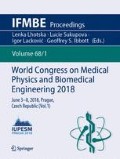Abstract
Decreased vision, double vision, eye fatigue and strain associated with strabismus often require no-surgical or surgical options which may lead to overcorrection or under correction with a need for a follow up surgery. Therefore, quantitative assessment of the degree of strabismus can serve as very useful tool for deciding on therapeutic options and evaluation of their outcomes. Further, US focused statistics indicate that 4% of the population has strabismus while some global estimates attribute this anomaly only to 0.034% of world population. These contrasting statistics further lead to a necessity of having a uniform quantitative tool for a broader application to determine the scope and the degree of this anomaly in different populations. At this point variety of tests are used including Hirschberg test, Cover test, and Central Corneal Light Reflex Ratio. Therefore, the developed technique allows automatic quantitative detection of a presence of possible strabismus and calculation of linear and vertical deviations of eyes in digital images. In particular, the proposed algorithm was structured in seven stages: (1) face matching (2) face detection and alignment (3) extraction of region of interest (4) locating the iris of both eyes and their center positions (5) selection of reference points in the eyes (6) calculation of linear and vertical deviations (7) making prediction using pre-trained regression model. This methodology has 93% of accuracy, 84% of sensitivity and 30% of specificity as tested on 128 images. In particular, the outcome encompasses a methodology for two graphical user interfaces which have real time as well as local image processing capability; a bounding box approach to make the face of a person aligned; and determination of numerical linear and vertical deviations of the eyes in millimeters. While the deviation of normal eyes is close to zero, the higher numbers indicate pre-strabismus or strabismus conditions respectively.
Access this chapter
Tax calculation will be finalised at checkout
Purchases are for personal use only
References
Jian-Nan, Peng-Yi, Si-Yi, Chuang, & Ying. (2009). Key Techniques of Eye Gaze Tracking Based on Pupil Corneal Reflection. Intelligent Systems, 2009. GCIS ‘09. WRI Global Congress on, 2, 133–138.
Khumdat, N., Phukpattaranont, P., &Tengtrisorn, S. (2013). Development of a computer system for strabismus screening. Biomedical Engineering International Conference (BMEiCON), 2013 6th, 1–5.
Varier, D., & Krishnamoorthy, V. (2014). An electrooculogram based real time system for measurement and analysis of visual stimuli for detecting strabismus and nystagmus. Advances in Computing, Communications and Informatics (ICACCI), 2014 International Conference on, 1125–1130.
Mathworks. (2017). Single Camera Calibration App. [Online]. https://www.mathworks.com/help/vision/ug/train-a-cascade-object-detector.html.
ImageNet. (n.d.). Face Synsets. [Online]. Available: http://www.image-/imagenet.synset/textnet/api.org.geturls?wnid=n09618957.
Google, (n.d.). Face (Image Serach). [Online]. Available: https://www.google.com/search?biw=944&bih=947&tbm=isch&sa=1&q=face&oq=face&gs_l=psy-ab.3..0j0i67k1l2j0.4914.5199.0.5434.4.4.0.0.0.0.228.430.2-2.2.0….0…1.1.64.psy-ab..2.2.430….0.3TXAw0gbymM.
P. Viola and M. Jones, “Rapid object detection using a boosted cascade of simple features,” presented at the IEEE Computer Society Conf. Computer Vision and Pattern Recognition, 2001.
Fitriyani, N., Yang, C., & Syafrudin, M. (2016). Real-time eye state detection system using haar cascade classifier and circular hough transform. Consumer Electronics, 2016 IEEE 5th Global Conference on 1–3.
Seddik, A., & Shawky, D. (2015). Logistic regression model for breast cancer automatic diagnosis. SAI Intelligent Systems Conference (IntelliSys), 2015, 150–154.
Pavlyshenko, B. (2016). Machine Learning, Linear and Bayesian Models for Logistic Regression in Failure Detection Problems.
Economides, J., Adams, D., & Horton, J. (2016). Variability of Ocular Deviation in Strabismus. 63–69.
Conflict of Interest
The authors declare that they have no conflict of interest.
Author information
Authors and Affiliations
Corresponding author
Editor information
Editors and Affiliations
Rights and permissions
Copyright information
© 2019 Springer Nature Singapore Pte Ltd.
About this paper
Cite this paper
Suriyal, S., Druzgalski, C., Gautam, K. (2019). Quantitative Assessment of Strabismus and Selected Vision Related Anomalies. In: Lhotska, L., Sukupova, L., Lacković, I., Ibbott, G.S. (eds) World Congress on Medical Physics and Biomedical Engineering 2018. IFMBE Proceedings, vol 68/1. Springer, Singapore. https://doi.org/10.1007/978-981-10-9035-6_19
Download citation
DOI: https://doi.org/10.1007/978-981-10-9035-6_19
Published:
Publisher Name: Springer, Singapore
Print ISBN: 978-981-10-9034-9
Online ISBN: 978-981-10-9035-6
eBook Packages: EngineeringEngineering (R0)

